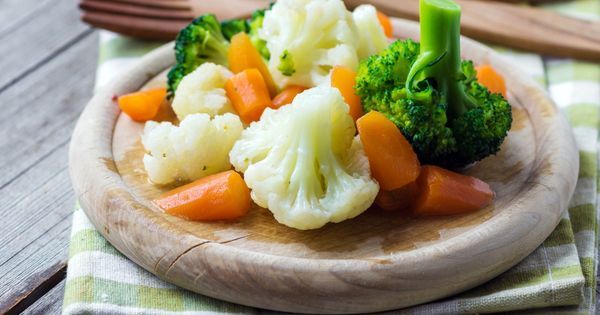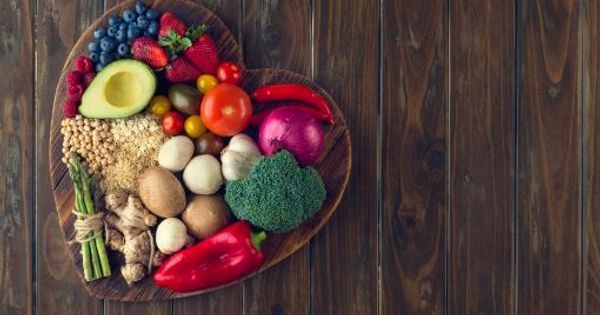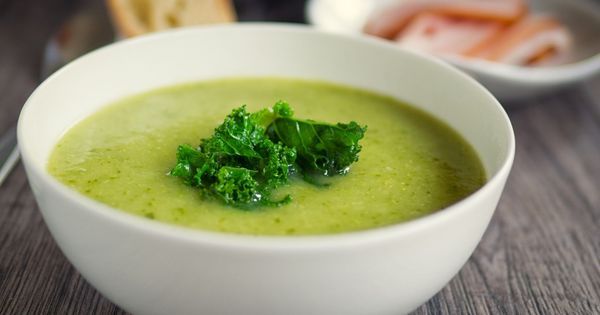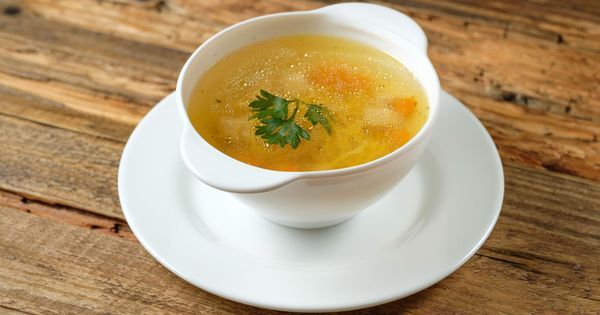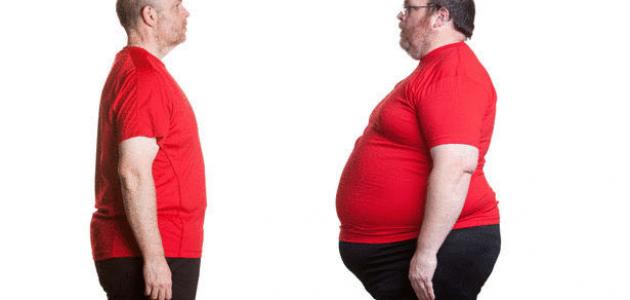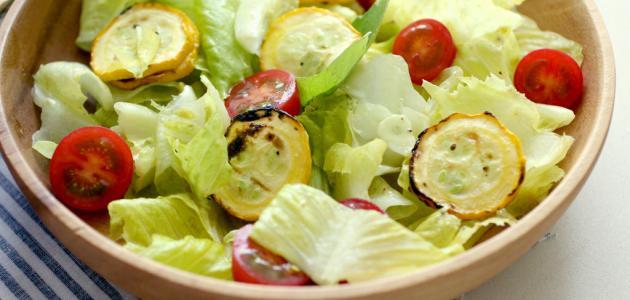Popularized by two American researchers, the paleo diet consists of eating as our hunter-gatherer ancestors did before the advent of agriculture. Effective for losing weight, it aims to prevent common chronic diseases, cancers, and cardiovascular ailments.
What is the paleo diet?
The Paleolithic diet consists of eating in the manner of our hunter-gatherer ancestors. It consists of fruits, berries, vegetables, nuts, wild plants, as well as game (lean meats), fish, shellfish, and eggs. It excludes cereal foods and dairy products, introduced later into human food - in the Neolithic era 10,000 years ago - during the advent of agriculture. It bans industrial foods.
The Paleolithic diet was popularized by two American researchers. Dr. Boyd Eaten, an anthropologist at Emory University in Atlanta, described its benefits as early as 1985 in a publication in the prestigious New England Journal of Medicine. Dr. Loren Cordain, professor at the University of Colorado, took an interest in it at the end of the 1990s and published numerous articles on the subject, as well as a book. Since the beginning of the 2000s, other researchers have been evaluating the interest of the paleo diet in the management of obesity or various metabolic disorders, such as type 2 diabetes or hypercholesterolemia.
How does the Paleolithic diet work?
For researchers, this Civilization gap plays a very important role in the development of obesity and the most frequent so-called "civilization" diseases: type 2 diabetes, cardiovascular diseases, cancers, neurodegenerative diseases, and even osteoporosis, acne, and myopia, Analysis of the bones found by anthropologists confirms that upper Paleolithic hunter-gatherers were thin and muscular, did not suffer from osteoporosis, They were tall since the men were 1.70 to 1.80 m tall. During the Neolithic period, changes in diet were associated with the onset of the first cavities, bone signs, deficiencies, and a decrease in average height.
Dr. Loren Cordain compared the macronutrient and micronutrient intakes of the contemporary Western diet and the paleo diet. The latter provides fewer carbohydrates, saturated fats, and sodium, but more proteins and fibers - which explains why it provides excellent satiety - essential omega 3, mineral salts, especially potassium, vitamins, 'antioxidants, and other beneficial plant compounds. According to Dr. Boyd Eaton, it provides up to 600 mg of vitamin C, which is about 6 times the daily recommended intake today.
Rich in protective nutrients, free from industrial foods.
What can I eat?
According to the research work of Dr. Boyd Eaten and Loren Cordain, the diet of men living in the Paleolithic period could vary according to region, climate, and season. On average, it was made up of 70% food of plant origin and 30% of food of animal origin.
Recommended foods
- Fruits: They provide the fiber that regulates intestinal transit and contributes to satiation, satiety, and the reduction of the blood level of LDL-cholesterol (called "bad cholesterol"). They also contain minerals, in particular potassium with hypotensive properties, vitamins B, C, E, K and beta-carotene (pro-vitamin A), polyphenols with anti-oxidant or anti-inflammatory effects. The men of the Paleolithic era had access above all to small red berries such as strawberries, raspberries, blackberries, blueberries, etc., not very sweet and rich in anthocyanins (polyphenols particularly recommended by researchers today). Fruits can be used as a dessert or as a snack.
- Vegetables: They generally provide the same nutrients like fruits, with the difference that they are low in sugars and therefore very low in calories. Rich in water, they contribute to hydration. They should be present at every main meal. Consumed raw as in prehistoric times, they provide more vitamins degraded by heat (B9, C), but are more irritating in the case of a sensitive intestine. The best is to alternate and opt for steam cooking which limits the loss of micronutrients.
- Seeds and nuts: linseed, chia, sunflower seeds, almonds, walnuts, hazelnuts, pistachios??? They are rich in fats (over 50%), but they are mainly monounsaturated fatty acids (omega 9), which participate in the reduction of LDL-cholesterol. Flax, chia or hemp seeds, and walnuts are excellent sources of omega 3, useful in cardiovascular prevention. Seeds and nuts have for the most part a high fiber content, provide proteins, minerals (potassium, magnesium, iron, copper, etc.), vitamins B and E. They can be eaten for breakfast, as a snack, or in main meals, incorporated for example in salads.
- Herbs: They participate in the supply of minerals, vitamins, and polyphenols. They help spice up dishes and help moderate salt.
- Lean meats: As a substitute for old game. Dr Boyd Eaten recalls that the flesh of wild animals did not contain more than 4% lipids. First category pieces of beef, veal, pork (steaks, roasts, cutlets, fillets, etc.) or skinless poultry. These foods are rich in easily assimilated protein, iron and zinc, group B vitamins. Meats can be eaten alternately with fish, seafood or eggs, these foods must be listed at least in one main meals.
- Fish and seafood: They are rich in protein, iodine, selenium, group B vitamins and contribute to the supply of iron and zinc. Oily fish (mackerel, sardines, herring, etc.) are excellent sources of vitamin D and omega 3, with an anti-inflammatory effect. They have their place at main meals, alternating with meats and eggs.
- Eggs: Chicken eggs replace the eggs of wild birds eaten in the Paleolothic era. They contain proteins, minerals, vitamins A, B and D. Their cholesterol intake has little impact on blood cholesterol levels. They can be eaten for breakfast or main meals, alternating with meats and fish.
- Olive, nut or rapeseed oils: These fats are not among the staple foods of the paleo diet, since prehistoric men did not cook. Nevertheless, they are recommended for seasoning or cooking by the various researchers who have adapted the paleo diet to our time. Olive oil is rich in monounsaturated fats (omega 9) and in vitamin E and polyphenols. Rapeseed or walnut oils are among the rare fatty substances that provide essential omega 3. Olive or rapeseed oils are suitable for cooking.
Prohibited foods
- Cereals: oats, wheat, corn, barley, quinoa, rice, rye and their derivatives: flour, bread, pasta, semolina, flakes for breakfast According to Paleolithic diet specialists, these foods whose constituents The main ones are carbohydrates (about 70%) induce an excessively high increase in blood sugar (blood sugar level) and as a result of insulin (hormone whose production is stimulated by the consumption of carbohydrates, which is used to regulate blood sugar) . However, excess insulin is linked to weight gain since it allows excess carbohydrates to be stored in the form of lipid and therefore fat.
- Pulses: beans, flageolet beans, white beans, red beans, lentils, split peas, chickpeas. These foods which contain up to 50% carbohydrates and are assimilated to starches, would raise blood sugar too much like cereals.
- Dairy products: cow's milk, goat's milk, sheep's milk, yogurts and other dairy products, cheeses, as well as butter and cream fresh. These foods were not yet eaten in the Paleolithic era. With the exception of mature cheeses and butter, they provide lactose, a specific milk sugar, which requires the presence of lactase in the intestine to be properly digested. Paleo diet specialists point out that the production of this enzyme decreases after infancy and that the consumption of dairy products can cause digestive problems in some adults. In addition, Dr. Loren Cordain recalls that the consumption of milk or milk stimulates the production of insulin: this effect could reinforce weight gain, at least in people who are already overweight or obese.
- Processed foods: ready meals, quiches, pizzas, crisps, sauces, breakfast cereals, pastries, cookies, chocolate bars, sugary drinks, etc. These products are often low in fiber or protective micronutrients and rich in sugars and bad fats ( saturated fatty acids, trans fatty acids) or salt, the excess of which has an unfavorable impact on health. Those which are made from cereals for the most part have a high glycemic index, which promotes overweight and metabolic diseases. Since the beginning of the 2010s, so-called "ultra-processed" foods whose manufacturing processes alter the nutritional quality of the ingredients or which are rich in additives have been implicated in the development of obesity, cardiovascular diseases, and even certain cancers.
Foods to moderate
- Potatoes: They provide 15% carbohydrates, 3 times more than the average vegetable, and therefore have more impact on blood sugar.
- Salt: The men of the Paleolithic era did not use it. Excess salt (sodium chloride) promotes an increase in blood pressure. Too much sodium and too little potassium have an acidifying effect in the body and are unfavorable to bone health. It is advisable to limit the salt as much as possible and to season the dishes with spices, herbs, and herbs.
Is the paleo diet easy to follow?
Cost
The Paleo diet excludes cheap foods like grains or processed foods and favors more expensive foods like meats, fruits, and vegetables. Its monitoring can lead to an increase in the budget devoted to food.
To save money, we can bet on:
- Eggs
- Poultry and lean pork (tenderloin)
- Frozen or canned fish of the mackerel or sardine type
- Seasonal fruits and vegetables, to be purchased at the end of the market.
Effectiveness of monitoring related to the paleo diet
The paleo diet does not impose any quantity. It is therefore not necessary to weigh the food, which limits the constraints.
The paleo diet, which excludes many foods, disrupts eating habits: for example, it involves going without bread for breakfast, cheese at the end of a meal, chocolate for afternoon tea. Over time, it can be monotonous and frustrating. While studies show that it helps to lose weight in the short term, there is no work showing that it stabilizes the weight obtained in the medium or long term. Like other restrictive diets, it is possible that it has a "yoyo effect" and promotes eating disorders in some people.
What type of physical exercise should accompany the Paleolithic diet?
According to Dr. Loren Cordain, humans are programmed to exercise a lot, like hunter-gatherers: who walked often and for a long time, had to carry heavy loads or run very quickly to escape danger or catch a game. The sedentary lifestyle is a major contributor to the development of obesity and chronic diseases.
The paleo diet must therefore be accompanied by a physical exercise program that mimics the activity of our ancestors.
- Endurance exercises (of moderate-intensity and of long duration), at least 30 minutes per day: walking, hiking, cycling, jogging, dancing, swimming.
- Resistance exercises (of high intensity and of short duration) at least 1 hour per week: push-ups, pull-ups, sprints i.e. run as fast as possible for 20 seconds, then recover for 10 seconds and start again several times (you can do exercises of similar intensity by jumping, pedaling or swimming).
These physical activities can be part of everyday life. For example, getting around as much as possible on foot, by scooter, or by bike, using the stairs instead of the elevators carry your shopping (except medical contraindication) rather than having it delivered.
Is this diet dangerous for health?
Cardiovascular risk
Several intervention studies have been carried out on small groups of volunteers with at least one cardiovascular risk factor, for example, high LDL-cholesterol. The paleo diet has in most studies been compared with the Mediterranean diet or the dietary recommendations of learned societies, such as the American Cardiovascular Association. Overall, the paleo diet significantly reduces blood pressure, as well as blood levels of LDL-cholesterol, triglycerides, and glucose (blood sugar). It also causes more weight loss, which could explain why it appears to be more effective than other diets18,19. Two studies have also shown that it helps reduce markers of inflammation and oxidation,
All in all, existing studies suggest that the paleo diet is rather protective of the cardiovascular system.
In addition, since the paleo diet does not impose quantities, an excess of meats (more than 500 g per week) could lead to an increase in LDL-cholesterol (via a significant intake of saturated fat), while high consumption of fruit (more than 800 g per day) could cause an increase in the level of triglycerides (via a significant intake of fructose).
Blood sugar risk
The Paleolithic diet has been tested on small groups of people with type 2 diabetes. It appears to reduce blood sugar (blood sugar level), as well as glycated hemoglobin (Hb A1c: value that reflects the blood sugar level over the three months preceding its dosage) and insulin resistance (a phenomenon that promotes and maintains type 2 diabetes).
In the absence of cereals and sugary products, the only foods in the Paleo diet that provide carbohydrates are fruits (nuts provide only a small amount). There is no study showing that the diet can cause hypoglycemia (too large drops in blood sugar), but you should be careful, especially during the intense exercises recommended (inducing a high muscle consumption of carbohydrates): eat at least one fruit in the hour preceding the exercise and then in the hour following. In case of diabetes, it is essential to speak with your doctor before starting a diet.
Bone risk
The absence of dairy products in the paleo diet can cause calcium intakes lower than the recommendations and possibly have an unfavorable impact on bone health in the medium or long term. However, according to Drs Eaten and Cordain, the men living in the Paleolithic period had strong bones and did not suffer from osteoporosis. Pathology which perhaps did not have time to develop since they only lived until 'at 35. This bone strength is attributed to the calcium intake of fruits and vegetables, as well as to sufficient exposure to the sun with the corollary of optimal vitamin D1.
To avoid any risk, it is prudent to supplement the calcium intake of plants with mineral waters rich in calcium (1 liter per day) and to consume sufficient fatty fish (at least 2 times a week) and eggs (up to 'to 1 per day) to have a correct intake of vitamin D.
Risk of colon cancer
In view of the multiple studies on the subject, the World Cancer Research Fund (WCRF), the National Cancer Institute (Inca) recommend not to consume more than 500 g of meat ( beef, veal, pork, lamb, etc.) per week to prevent colon cancer. So that the paleo diet does not increase this risk, it is important not to exceed the recommended limit and to alternate with poultry, fish, seafood and eggs. In addition, the paleo diet provides good proportions of antioxidants and other protective nutrients.
What type of meal does this diet offer?
Example of a typical day
Breakfast
- Coffee, tea or infusion without sugar.
- 1 egg or 1 chicken breast or 1 slice of roast.
- 1 handful of nuts or 1 avocado.
- 1 fresh seasonal fruit.
Lunch and dinner
- Raw vegetables in walnut oil or vegetable soup.
- Lean meat or poultry without skin or fish or seafood or eggs, cooking in rapeseed or olive oil.
- Vegetables cooked in olive oil.
- 1 seasonal fruit.
Benefits of the scheme
- The Paleolithic diet promotes the acquisition of good eating habits: avoid ultra-processed industrial foods and eat more vegetables, fruits and nuts, insufficiently present in the Western diet. These dietary practices are unanimously recommended by researchers and nutritionists.
- The paleo diet encourages daily physical exercise, we know that physical activity contributes to the prevention of many chronic diseases, in particular cardiovascular pathologies and certain cancers. In addition, exercise facilitates weight loss, helps to limit muscle wasting during weight loss and is essential for stabilizing healthy weight.
- The paleo diet, rich in fiber and protein, provides good satiety (absence of hunger), which facilitates its monitoring. For this reason, compared to the Mediterranean diet, it helps to lose more weight in the same period of time. In the short term, it appears particularly effective in reducing the fat located in the abdomen, which is the most dangerous for health.
Disadvantages of the diet
- Since the Paleolithic period, which dates back more than 10,000 years, living conditions have changed considerably: the way in which food is obtained and stored, the mechanization of difficult tasks, settlement in heated habitats. It is impossible to fully embrace the hunter-gatherer lifestyle.
- Despite advances in research, questions persist as to the diseases that prehistoric humans suffered from. Their good health, put forward by supporters of the Paleo diet, cannot be fully demonstrated. In addition, their life expectancy did not exceed 35 years.
- The paleo diet excludes foods that are not necessarily harmful to health. For example, cereals and pulses, the consumption of which is encouraged by most nutrition guides and which is widely eaten by vegetarians. Many studies show that the latter, compared to omnivorous people, have a lower risk of being overweight or of being affected by cardiovascular disease or cancer.

